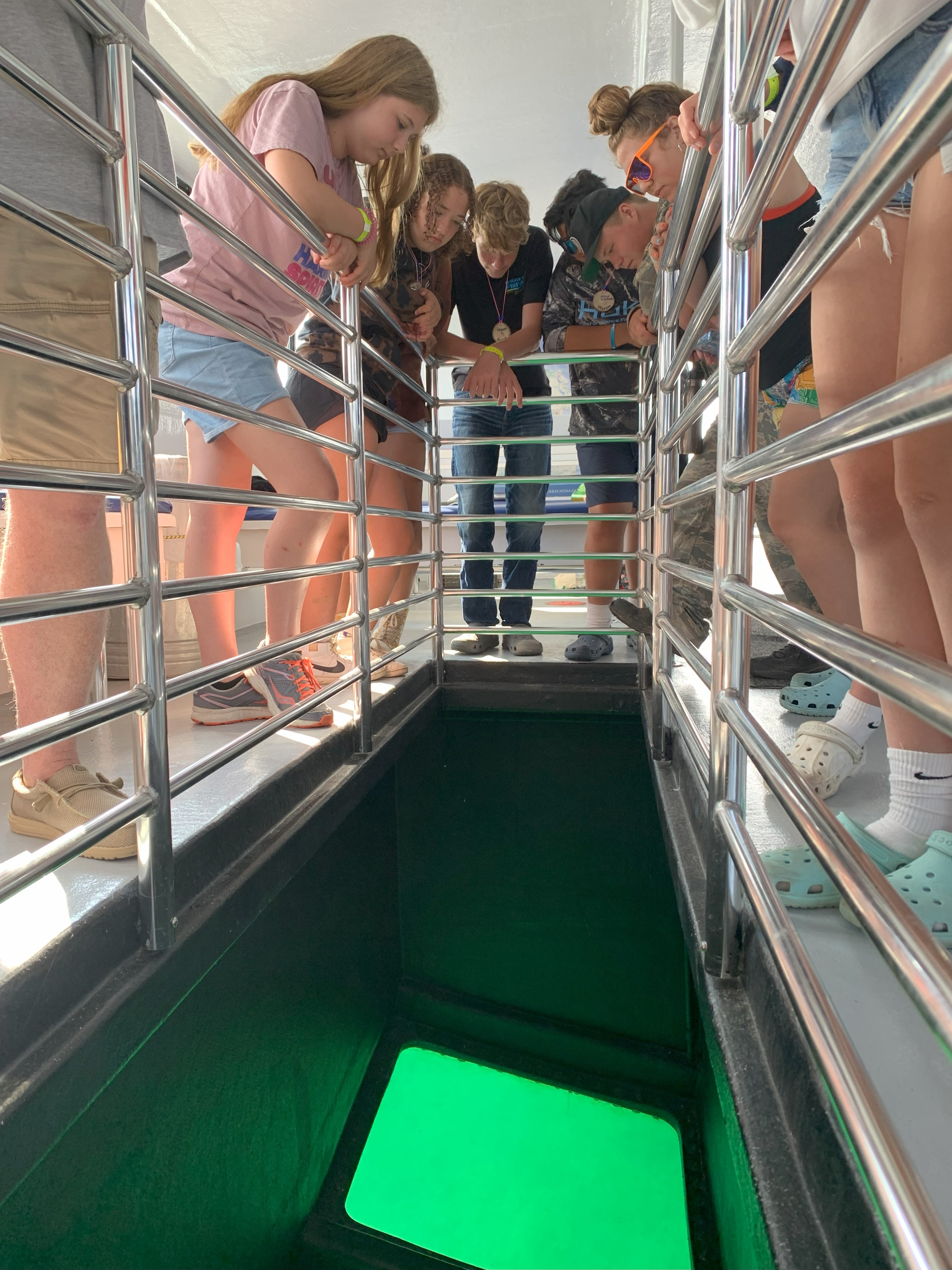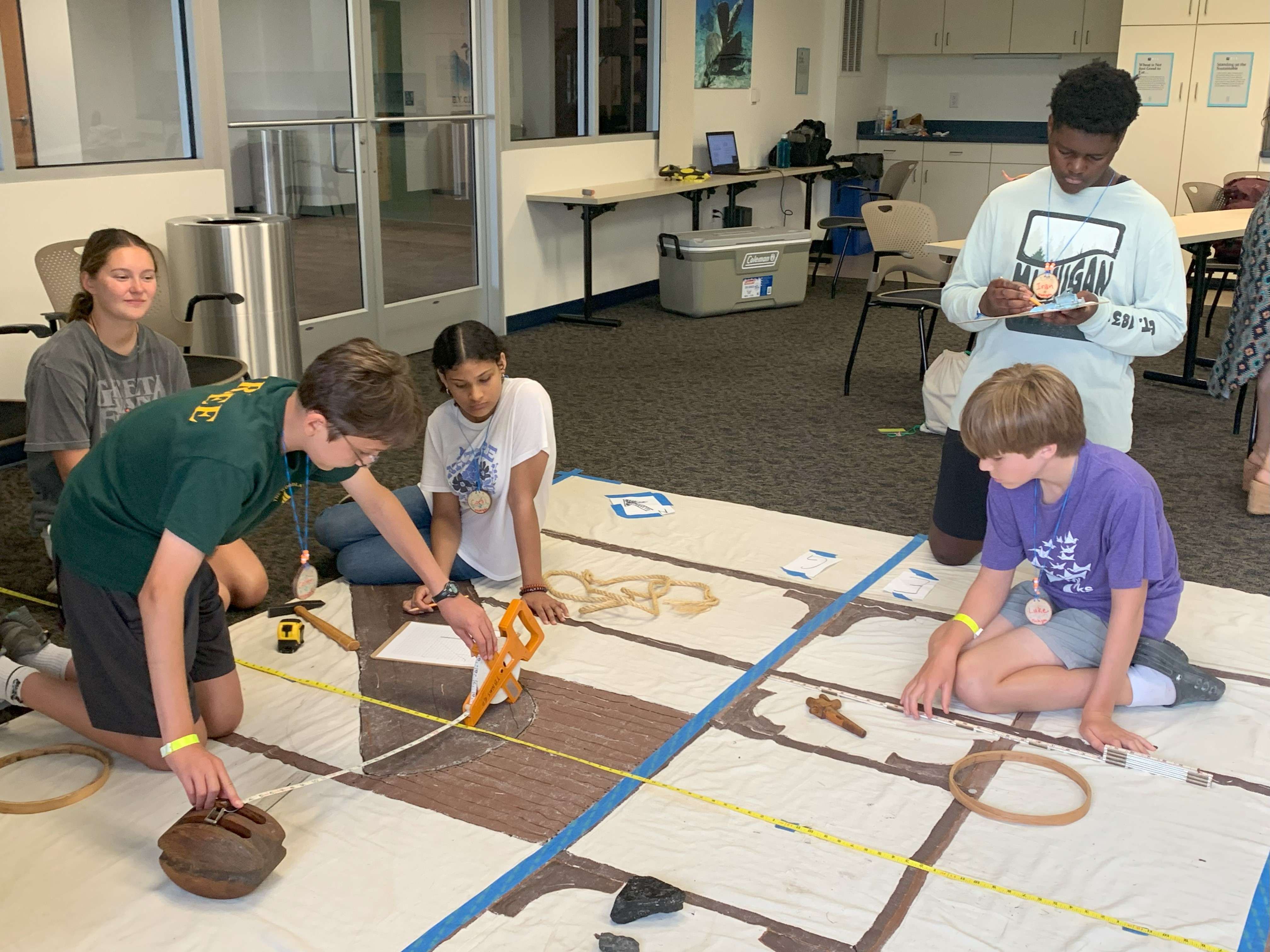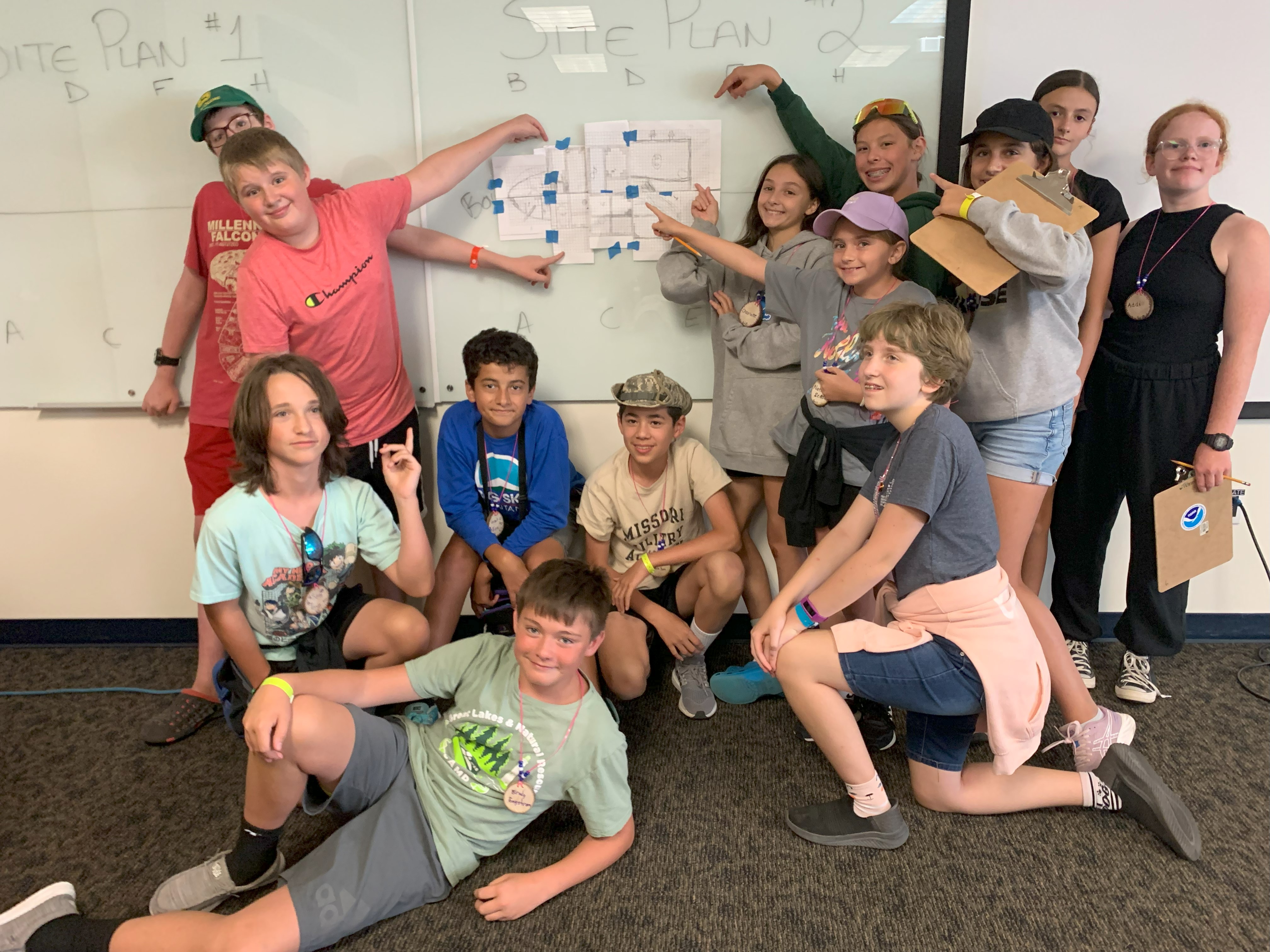Maritime history and archaeology come alive for 4-H youth campers at NOAA Thunder Bay National Marine Sanctuary
4-H Great Lakes and Natural Resources Camp campers explore science, careers, and environmental stewardship.

4-H Great Lakes and Natural Resources campers adventured this year out on Lake Huron aboard the Lady Michigan, to engage in a "deep dive" exploration aboard a glass-bottom boat tour of the Thunder Bay National Marine Sanctuary.
Marine history
A day on the water offered campers an introduction to the maritime history of the Thunder Bay region - and a view of several of the shallow shipwrecks such as the Haltiner Barge and William P. Rend that lie beneath the waves in "shipwreck alley." This shipboard science excursion allowed campers to experience the shipwrecks just under the surface of Lake Huron in an up-close and personal way. It provided a meaningful watershed educational experience that fosters a deeper appreciation for the maritime heritage of the area and how people have connected with the Great Lakes over time.

Maritime archaeology
What can we learn from these shipwrecks? How are we protecting these underwater treasures and the stories they have to share? To answer these questions, campers headed into the Great Lakes Maritime Heritage Center to learn more about maritime archaeology, the study of shipwrecks and other maritime cultural heritage.
Campers learned about the NOAA Thunder Bay National Marine Sanctuary’s work and mission to protect and promote a nationally significant collection of historic shipwrecks found in Michigan waters of Lake Huron through research, education, and community involvement. Campers toured the Great Lakes Maritime Heritage Center to see how scientific efforts are communicated to the public through museum exhibits.

Testing their skills
Wrapping up a day of exploration, campers were challenged to try out their own maritime heritage science and math career skills by mapping a section of a shipwreck. With grid paper and working in teams, they set to sketching sections practicing the technique of trilateration on a simulated shipwreck. Trilateration is a technique that archaeologists use to measure the specific location of an artifact through multiple measurements, creating a triangle.
As each group lined up their drawings of each section, campers completed their map of the full shipwreck in the same way archaeologists would in the field. This hands-on experience allowed the campers to form a deeper understanding of how shipwrecks are studied and the importance of protecting the maritime heritage of Lake Huron and all the Great Lakes.

Science and more
The week-long 4-H Great Lakes Natural Resources Camp, held annually in Presque Isle County at Camp Chickagami, provides hands-on learning experiences engaging nearly 70 youth, ages 13-15, in exploring science, leadership, careers, and of course, recreation related to Michigan’s Great Lakes and natural resources. The camp, an MSU pre-college program, is sponsored by Michigan State University Extension, 4-H Youth Development, Michigan 4-H Foundation, Michigan Sea Grant, and MSU Department of Fisheries and Wildlife, among several others.
During the camp, teens participate in science sessions relating to local woodlands and wildlife, Great Lakes invasive species, wetlands, watersheds, fisheries, and more. Campers learn about Michigan’s outdoors in numerous hands-on activities, while exploring potential careers by working with professional experts. The opportunity to explore maritime history and heritage with the NOAA Thunder Bay National Marine Sanctuary team reflects just one of these days in an action-packed week for these 4-H youth.
More than just science, this camp experience also fosters awareness and appreciation of the diverse values Michiganders have toward our Great Lakes resources. In the end, these campers return to their communities with these experiences as future leaders in environmental stewardship – and maybe, someday, as future Great Lakes scientists.
Michigan Sea Grant helps to foster economic growth and protect Michigan’s coastal, Great Lakes resources through education, research and outreach. A collaborative effort of the University of Michigan and Michigan State University and its MSU Extension, Michigan Sea Grant is part of the NOAA-National Sea Grant network of 34 university-based programs.
This article was prepared by Michigan Sea Grant under award NA22OAR4170084 from the National Oceanic and Atmospheric Administration, U.S. Department of Commerce through the Regents of the University of Michigan. The statement, findings, conclusions, and recommendations are those of the author(s) and do not necessarily reflect the views of the National Oceanic and Atmospheric Administration, the Department of Commerce, or the Regents of the University of Michigan.



 Print
Print Email
Email

